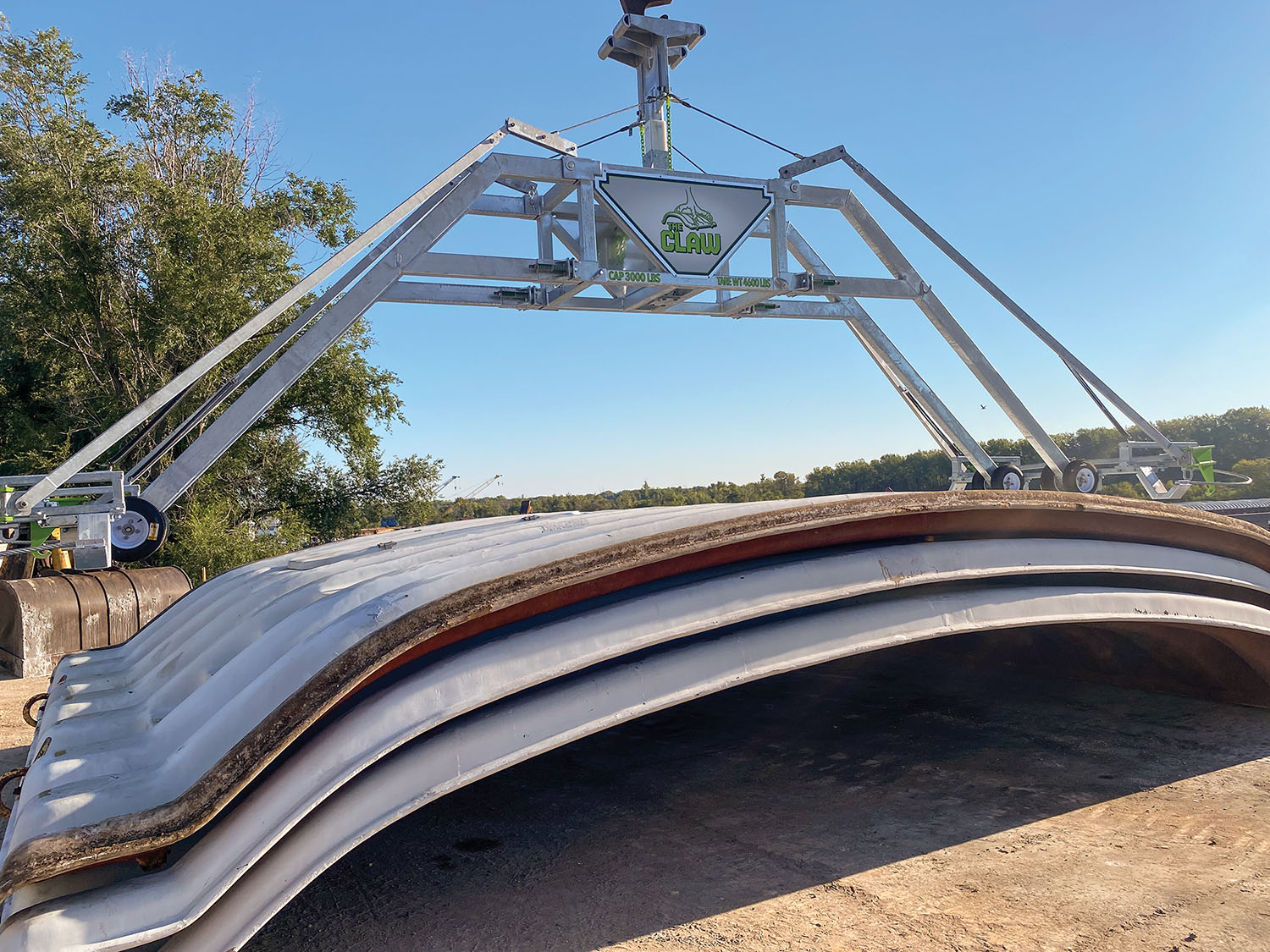Chuck Gifford has been involved in barge fleeting and terminal operations his entire 47-year career in the maritime industry. In fact, he married into it.
“My wife’s family had a river terminal on the Mississippi River in Camanche, Iowa,” Gifford said. “In ’77, I started working there, so setting covers is something I’ve had to deal with my whole life. I’ve been in the crane. I’ve been out on the lids.”
Fast forward to 2009 when Gifford’s family sold the terminal, with Gifford staying on with the company. Early on, Gifford devised a new tool to keep as many people off the barge lids as possible. That device worked, but as time went on, Gifford knew he could improve on it. Then, in 2017, he invented “The Claw Lid Lifter,” a new, mechanical design that would allow lid operations with no people on the barges.
“It’s purely mechanical, a catch-and-release operation, I like to call it,” Gifford said. “There are no springs or anything. It simply operates off of gravity.”
On top, the Claw has what Gifford calls a T-head, which is where it locks into a material handler or crane’s clamshell bucket. The operator then lifts and lowers the Claw into place, lining it up with the recesses of the barge lid. Lowering the Claw onto the lid activates its catch-and-release mechanism, so that when the operator raises it, hooks on the end of the Claw’s arms grab the barge lid’s lift eyes. After the lid is hoisted and placed out of the way, setting it down again activates the catch-and-release function, freeing the Claw of the lift eyes.
“It has a lifting capacity of 3,000 pounds, which means that one Claw can lift one cover at a time,” Gifford said. “It’s about as simple as you can get it.”
Gifford said the Claw is sized to fit barges with both eight and nine covers.
“The spacing of the rings is pretty consistent on barges,” Gifford said. “The arms of the Claw are able to split, so as you come down on those wider covers, it just nudges the legs and arms out, so you can grab those covers.”
With that flexibility, the Claw is able to lift and set about 98 percent of barge lids in use today. The remaining 2 percent, Gifford said, are old covers that are gradually going out of service.

Gifford said the facility in Camanche was the first to put the Claw into service, and that original unit is still at work. Oertel Metal Works in Davenport, Iowa, manufactures the Claw for Gifford, who is the sole seller, deliverer and installer of the Claw.
“Sales have been increasing every year, and that feels good, because I know safety improves with every delivery,” he said.
Terminals from the Upper Mississippi River in Iowa to below New Orleans have put the Claw into service. In early April, Gifford was in Myrtle Grove, La., at a site considering using a series of lifters to lift multiple lids simultaneously. Gifford said, while the business is growing, he’s still able to customize the system for individual customers.
“Being small like I am lets me be flexible,” he said.
Gifford said an obvious advantage of the Claw is efficiency of operation. Hand-in-hand with that, though, is enhanced safety.
“Years ago, everyone had a conventional crane and a set of chains, with a guy on top of the cover throwing two chains down one side and two chains down the other side,” Gifford said. “You’d hook the cover up, then the crane operator would set it up on the dock or on the ends of the barge. It usually took two crew members hooking and two unhooking, plus the material handler operator.
“With the Claw, you don’t have to come up with those four crew members,” he added. “Now, the operator can have the lids removed before anyone else shows up. Then you can go right into your loading or unloading operation. With help being harder to find, it becomes more important. The big thing is the ease of setting covers and the advantage of not having anyone on the covers. That’s what everybody likes.”
That’s the message Randy Simmonds, vice president of operations for Carlisle & Bray Enterprises, shared about Gifford’s product.
“The Claw has been a great asset to our operations for both safety and production,” Simmonds said. “Not only does the Claw reduce our overboard exposures by eliminating the need for crews on the barge to work covers, it also frees up those crews to perform other tasks during cover handling.”
Gifford said, looking strictly at time efficiency, he estimates a terminal would need to handle 100 barges or more in a year to make a case for the Claw from a purely financial feasibility standpoint. But the financial case isn’t the only factor terminal operators take into consideration, he said.
“There are smaller companies that only do, say, 50 barges a year, but they’re really focused on safety,” Gifford said, “so their commitment to safety makes it an easy business case.”
Caption for top photo: The Claw Lid Lifter is designed to remove and replace barge covers without needing to have people on the barge. (Photo courtesy of Chuck Gifford)



